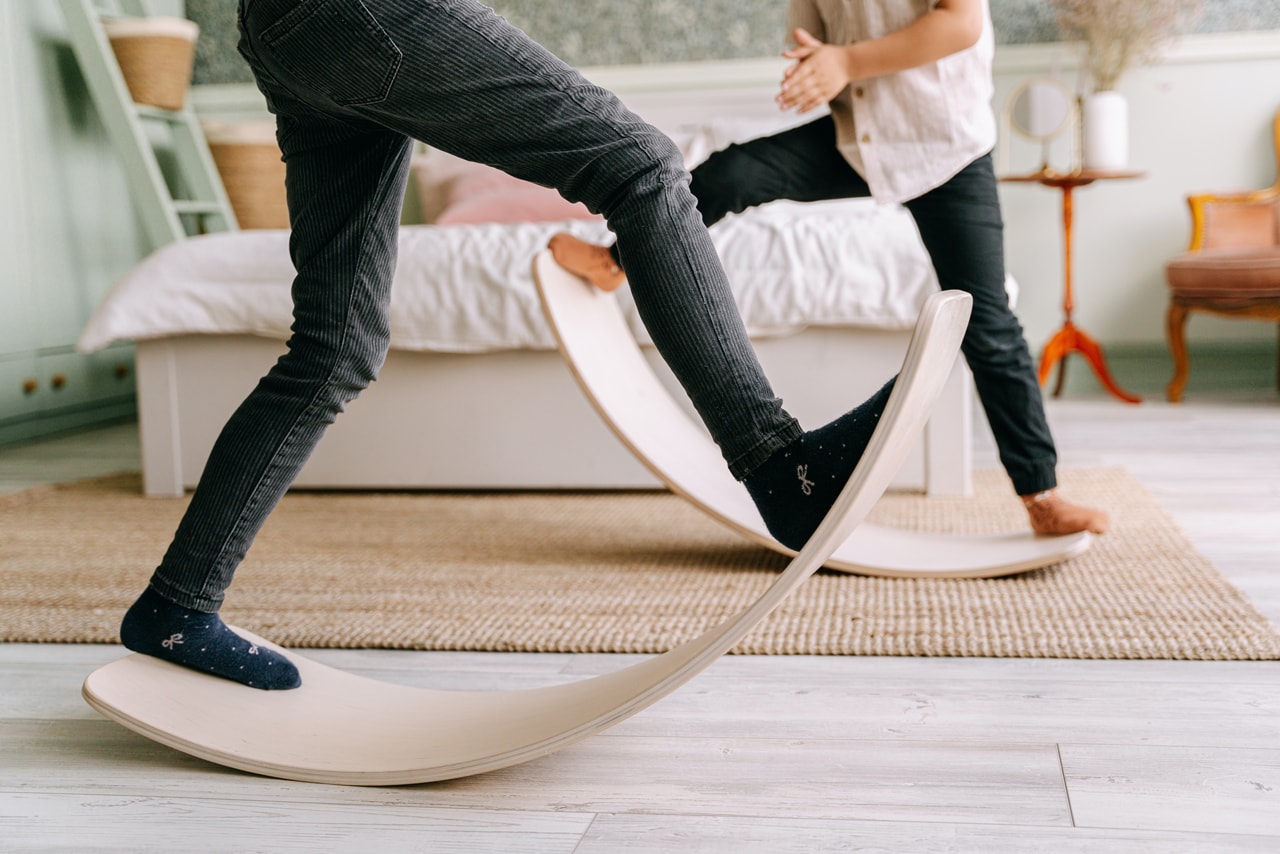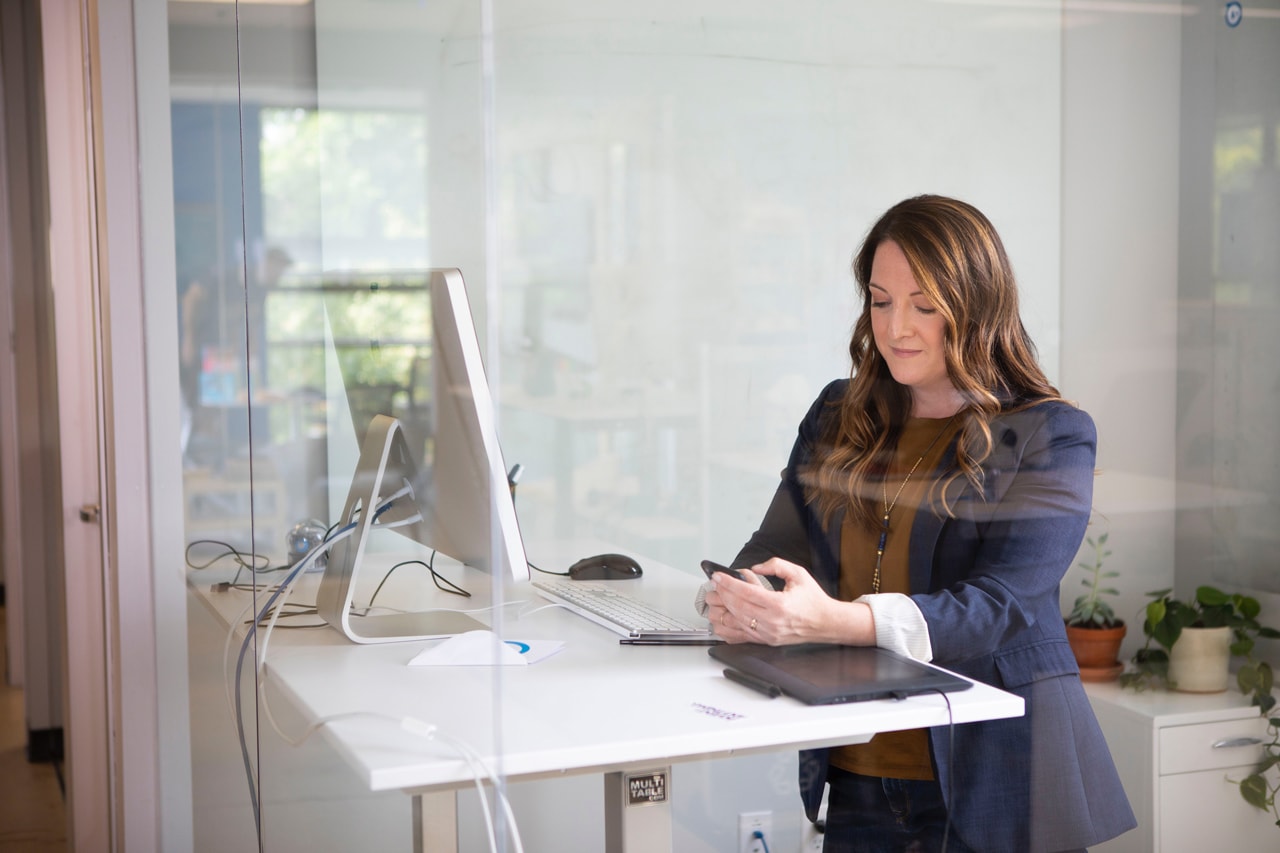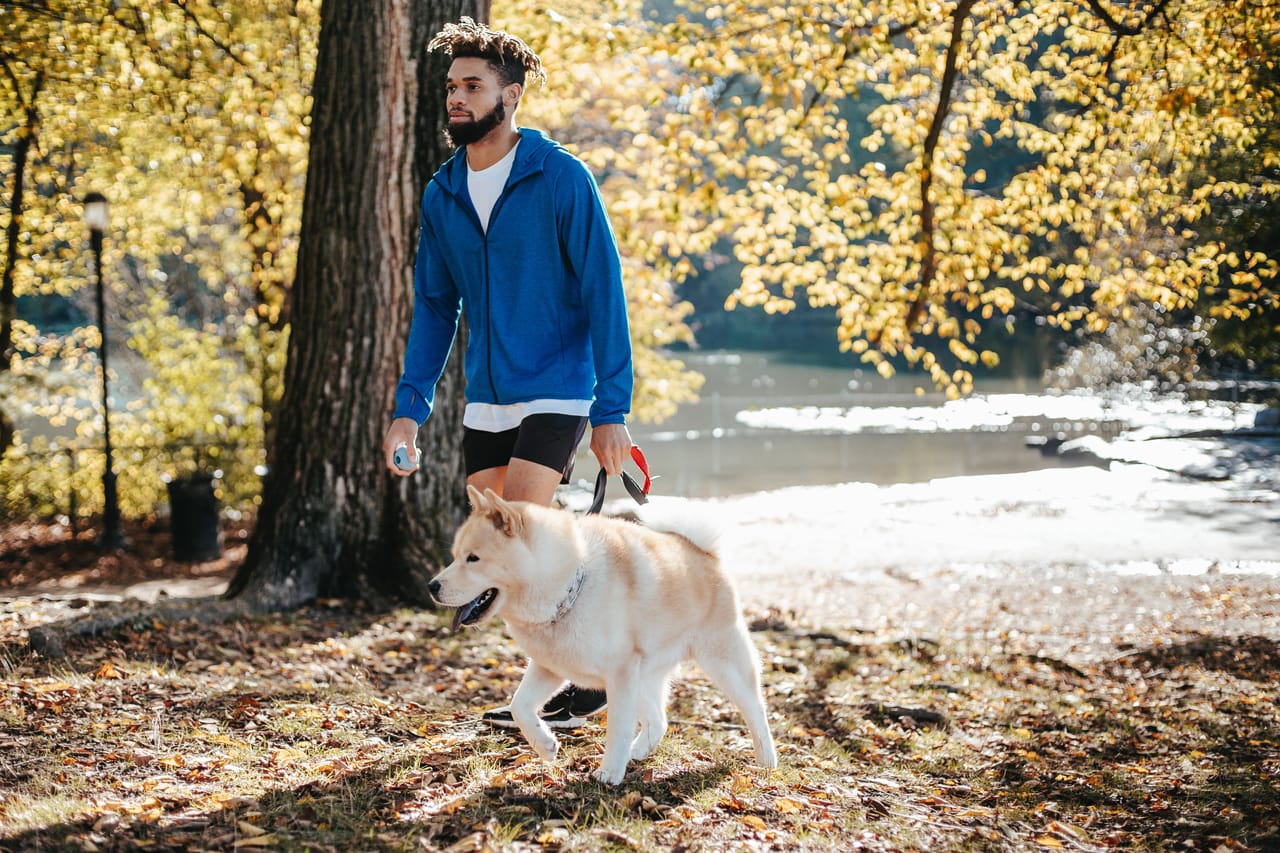Balance is simply how our spines and limbs dance with gravity.
But really balance is much more than this: balance is what defines our species. We are the most graceful of bipeds, able to navigate the world with a unique gait, gifted to us by evolution. Although balancing our upright carriage requires a good deal of effort by our nervous systems, overall, a human walking is among the most energy-efficient approaches to locomotion in evolution’s array of solutions: human walking is 25 percent more efficient than the average, same-sized mammal's walking1. And upright walking brings other advantages. For example, our bipedal gait allows us to see further while walking or running, a legacy of our evolutionary past when we were both prey and predator.
The advantages of upright posture require that we are able to reliably balance, an ability that requires many months before an infant gets the hang of it. Four-legged walking is much more easily acquired; deer can walk within minutes of birth and run shortly thereafter. However, once a human has learned to walk, balance is effortless and taken for granted, the earned advantage of those many failures as a toddler.
This story doesn’t always have a happy ending, however. As more of us are living into old age, more of us are finding balance is no longer the effortless skill we’ve relied on for a lifetime. In part, this is because our world of paved surfaces and minimal exertion fail to keep our nervous systems sharp and our musculature strong. This progressive loss of our ability to balance can have profound consequences for our health. A recent article in the British Journal of Sports Medicine2 found that those who could not stand on one leg for 10 seconds were almost twice as likely to die as those who could. Worrisomely, half of people over the age of 70 failed this simple test.

How is it that loss of balance can be fatal? One obvious answer is the increased risk of falling. Falls are not only common (approximately 30% of the elderly fall at least once each year), but often serious with 3% of falls resulting in death3. Falls are also associated with “frailty”, a grab bag term for a collection of non-fatal illnesses that together make people more likely to die.
Is there any alternative to worsening balance4 and its consequences? A recent New York Times article had several suggestions for enhancing balance. Dr. Seidler of the Kinesiology Department at the University of Florida observed that, although almost any exercise helps with balance, there are several specific exercises that are particularly useful and can be done at home without any special equipment: one-legged standing with support, squats, heal-to-toe standing, and hands-and-knees “bird dog” repetitions can all help improve balance, as can movement practices such as Tai Chi.
Standing balance boards have been used for decades to help improve balance and decrease the risk of ankle sprains in athletes, but more recently these simple devices have been used to help older folks avoid falls5. Although no large-scale studies have been done on fall prevention it seems likely that exercising the muscles, and especially the spinal reflexes, involved in standing balance would help older people find greater stability in their daily activities. It’s also likely that balanced sitting provided by some active chair designs will improve balance, but this has not been systematically studied.
How might you improve your balance and avoid the consequences of failing balance? You might want to begin by trying the 10-second-one-leg standing test to get a sense for your level of risk for falls (and perhaps an earlier demise than you might have been planning on). For extra points, you might want to try the one-legged test with your eyes closed. If your one-legged standing test is less than 10 seconds you may want to try to improve your balance. Success is more likely if you can find a balancing routine that you enjoy; perhaps you’ll love Tai Chi or some other movement art (tango?) that can become a lifelong pursuit. Or maybe you’ll find it amusing to stand on one leg while watching Netflix. Working with a physical therapist and a standing balance board can also pay immediate dividends in terms of improved balance strategies and muscular strength. Regardless of how you go about improving balance and strength, the 10-second-one-leg standing test is a quick and easy way to keep track of your progress.
Everything ages, and with age it’s usually the case that a little more time and effort are required to keep up with the upkeep. Our aging selves are no different. And because our bodies are among our most prized possession, it only makes sense to step up our upkeep efforts.
1Comparative energetics of mammalian locomotion: Humans are not different
3Ground level falls are associated with significant mortality in elderly patients
4Can You Pass the 10-Second Balance Test?
5Effects of balance training using wobble boards in the elderly





Leave a comment
All comments are moderated before being published.
This site is protected by hCaptcha and the hCaptcha Privacy Policy and Terms of Service apply.